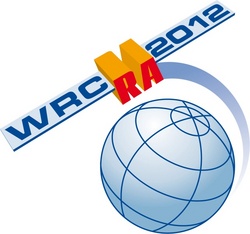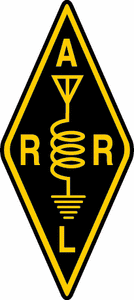 February 2, 2012 John E. Ross, KD8IDJ, Editor
| ||||||||||
+ Available on ARRL Audio News. + WRC-12: The First Week By IARU Secretary Rod Stafford, W6ROD
The International Telecommunication Union (ITU) 2012 World Radiocommunication Conference (WRC-12) began January 23 in Geneva, Switzerland. This is the "big show" for spectrum allocation matters and a very important meeting if you are an Amateur Radio operator anywhere in the world. Every four or five years, a WRC takes place; the last one was in 2007. Approximately 3000 people are attending WRC-12. These are government officials, telecommunication industry people and others -- like the IARU -- who have an interest in the use of the radio spectrum. The agenda items discussed during WRC-12 were established at the previous WRC in 2007. In the past 4.5 years, there have been many committee meetings within the ITU to try to arrive at solutions that will satisfy each of the agenda items. In the case of some of the agenda items, several possible methods to satisfy the agenda item have been identified. It is up to the WRC to select the most appropriate method to satisfy the agenda item, that is, to arrive at a worldwide solution to the issue presented in the agenda item. Read more here. + WRC-12: Agenda Item 1.23 Update According to Colin Thomas, G3PSM, CEPT Coordinator for Agenda Item 1.23, WRC-12 delegates are progressing with what he calls a "compromise proposal" for an MF secondary allocation to the Amateur Radio Service. Agenda Item 1.23 calls for WRC-12 delegations to consider an allocation of about 15 kHz in parts of the band 415-526.5 kHz to the Amateur Service on a secondary basis, taking into account the need to protect existing services. "Progress was made with a compromise proposal on Agenda Item 1.23, drafted to take into consideration the views of those for and those against an amateur service allocation around 500 kHz," Thomas explained. "This proposal suggests a 7 kHz segment between 472-479 kHz, very close to the CEPT position of 472-480 kHz. Initial indications are that this could be acceptable to many administrations and regional organizations. However, various meetings need to take place to have these formally accepted. In order to tidy up the draft for the next meeting of the sub-working group, a weekend meeting of the drafting group will be held. At the time of writing [Saturday, January 28], the NOC (No Change) advocates steadfastly maintain their positions." + FCC News: FCC Sets Date for Medical Devices on 70 cm
In November 2011, FCC Commissioners unanimously agreed to allocate spectrum and adopt service and technical rules for the utilization of new implanted medical devices that operate on 413-457 MHz (70 cm). These devices will be used on a secondary basis as part of the Medical Device Radiocommunication (MedRadio) Service in Part 95 of the FCC rules. In the Federal Register for Friday, January 27, the FCC announced that the effective date for these new rules is Monday, February 27. The new rules expand the existing MedRadio Service rules to permit the use of new wideband medical implant devices that employ neuromuscular microstimulation techniques to restore sensation, mobility, and other functions to paralyzed limbs and organs. These medical devices hold enormous promise to advance the state of medical care, lower health costs, and improve the quality of life for countless Americans. The rules will allow these new types of MedRadio devices to access 24 megahertz of spectrum in the 413-419, 426-432, 438-444, and 451-457 MHz bands on a secondary basis. + ARRL HQ: Save the Date! Take a Virtual Tour of W1AW on February 12 Join W1AW Station Manager Joe Carcia, NJ1Q, on a virtual tour of W1AW, the Hiram Percy Maxim Memorial Station, the Amateur Radio station at ARRL Headquarters in Newington, Connecticut. Carcia will lead this tour via a live webcast on Sunday, February 12 at 5 PM EST (2200 UTC). Anyone with an Internet connection will be able to watch the tour here.
"We want viewers of this live Internet tour to feel as if they are actually at W1AW," Carcia explained. "If you came to W1AW in person, you would see the same things that we are going to show on the virtual tour: The three operating stations, the W1AW workshop, the transmitter racks that we use to send out our bulletins and use for the code practice transmission, the control console and Old Betsy, Hiram Percy Maxim's personal spark gap transmitter." Al Petrunti, KA1TCH, of the New Day Group, will follow Carcia as he leads viewers through the station. ARRL Staff members, including Media and Public Relations Manager Allen Pitts, W1AGP, and Chief Operating Officer Harold Kramer, WJ1B, as well as local television weatherman Geoff Fox, K1GF, will also be on hand at W1AW during the tour. "Hams around the world know of W1AW, and thousands have made contacts with this impressive station -- but most hams never get to see it," Pitts said. "Thanks to Al Petrunti's group, we hope that folks enjoy seeing what's at the other end of the signals. As in all live broadcasts, you never know just what might happen. We invite you to join us." Pitts is producing the live web tour. This is the second video that the New Day Group has made for the ARRL. In 2011, they created the HR 607 video that educated radio amateurs of a bill in Congress that addressed certain spectrum management issues, including the creation and maintenance of a nationwide Public Safety broadband network using current Amateur Radio spectrum. + ARRL HQ: Volunteer Tour Guides Make Your Visit to ARRL Headquarters Pleasant and Informative
When you visit ARRL Headquarters in Newington, Connecticut, the first smiling face you're likely to see is a tour guide. ARRL's Tour Guide program now includes 19 volunteers who donate thousands of hours of their free time per year, giving tours to hundreds of visitors. ARRL's tour guides are an integral part of the ARRL. When not giving tours, they are busy accomplishing tasks in various HQ departments -- sorting QSL cards, working on special projects in the lab, updating the periodicals archive, and much, much more. Read more here. +ARRL Field Day: 2012 Field Day Packet Now Available
It's that time of year again -- time to start gearing up for ARRL Field Day, June 23-24, 2012! ARRL's flagship operating event -- always held the fourth full weekend in June -- brings together new and experienced hams for 24 hours of operating fun. Field Day packets are now available for download and include the complete rules, as well as other reference items such as forms, ARRL Section abbreviation list, entry submission instructions, a Frequently Asked Questions section, guidelines for getting bonus points, instructions for GOTA stations and a kit to publicize your event with the local press. A brief one-page flyer with basic "What is Field Day" information has also been included in this year's Field Day packet. Amateur Radio clubs and individuals are encouraged to reproduce this flyer as a handout for information tables. ARRL in Action: What Have We Been Up to Lately?
This feature is a concise monthly update of some of the things that the ARRL is doing on behalf of its members. This installment -- which covers the month of January -- takes a look the 2012 World Radiocommunication Conference, the ARRL Board of Directors' 2012 Annual Meeting, new ARRL books, new antennas at the W1AW antenna farm, FCC decisions affecting Amateur Radio, reports from the Official Observer Desk and more. Read more here. + On the Air: 4U1ITU now 4U1WRC During WRC-12
4U1ITU -- the Amateur Radio station at the ITU -- will be signing as 4U1WRC during the 2012 World Radiocommunication Conference (WRC-12), through February 17. The station will revert to 4U1ITU just in time for the ARRL International DX CW Contest, scheduled for February 18-19. According to ARRL Chief Executive Officer David Sumner, K1ZZ, who is attending WRC-12 as the IARU International Secretariat, the station is in really good shape, with two operating positions capable of going on any two bands at the same time. "A number of delegates are active amateurs, so the station should be quite active for the next several weeks," he said. Amateurs who work 4U1WRC between January 23-February 17, 2012 can receive a special QSL card via the HB9 Bureau or by QSLing direct to IARC, PO Box 6, CH-1211 Geneva 20, Switzerland. Solar Update
Tad "Strolling slowly toward the Sun" Cook, K7RA, reports: Over the past reporting week -- January 26-February 1 -- the average daily sunspot number declined nearly 37 points to 62, while the average daily solar flux was off nearly 21 points to 120.4. The predicted solar flux for the near term is 120 on February 2-5, 110 on February 6-9, 150 on February 10, 155 on February 11-13, 150 on February 14-19, and then 145 on February 20-23. The forecast in mid-January for flux levels at 165 on February 17-21 are but a distant memory. Shortly after the last bulletin was released on Friday, January 27, a powerful X-class solar flare was released at 1837 UTC, but it was not Earth-directed. Look for more information on the ARRL website on Friday, February 3. For more information concerning radio propagation, visit the ARRL Technical Information Service Propagation page. This week's "Tad Cookism" is brought to you by Sugarloaf's Green Eyed Lady. This Week in Radiosport This week:
Next week:
All dates, unless otherwise stated, are UTC. See the ARRL Contest Branch page, the ARRL Contest Update and the WA7BNM Contest Calendar for more information. Looking for a Special Event station? Be sure to check out the ARRL Special Event Stations Web page. + ARRL Congratulates: Ralph Taggart, WB8DQT , Wins January QST Cover Plaque Award
The winner of the QST Cover Plaque Award for January is Ralph Taggart, WB8DQT , for his article "Vintage Low Power Radios. " Congratulations Ralph! The QST Cover Plaque award -- given to the author or authors of the best article in each issue -- is determined by a vote of ARRL members on the QST Cover Plaque Poll Web page . Cast a ballot for your favorite article in the February issue today. Upcoming ARRL Section, State and Division Conventions and Events
To find a convention or hamfest near you, click here. ARRL -- Your One-Stop Resource for Amateur Radio News and Information Join or Renew Today! ARRL membership includes QST, Amateur Radio's most popular and informative journal, delivered to your mailbox each month. Subscribe to NCJ -- the National Contest Journal. Published bi-monthly, features articles by top contesters, letters, hints, statistics, scores, NA Sprint and QSO Parties. Subscribe to QEX -- A Forum for Communications Experimenters. Published bi-monthly, features technical articles, construction projects, columns and other items of interest to radio amateurs and communications professionals. Free of charge to ARRL members: Subscribe to the ARES E-Letter (monthly public service and emergency communications news), the ARRL Contest Update (bi-weekly contest newsletter), Division and Section news alerts -- and much more! Find us on Facebook. Follow us on Twitter. ARRL offers a wide array of products to enhance your enjoyment of Amateur Radio Donate to the fund of your choice -- support programs not funded by member dues! Click here to advertise in this newsletter. | ||||||||||

















